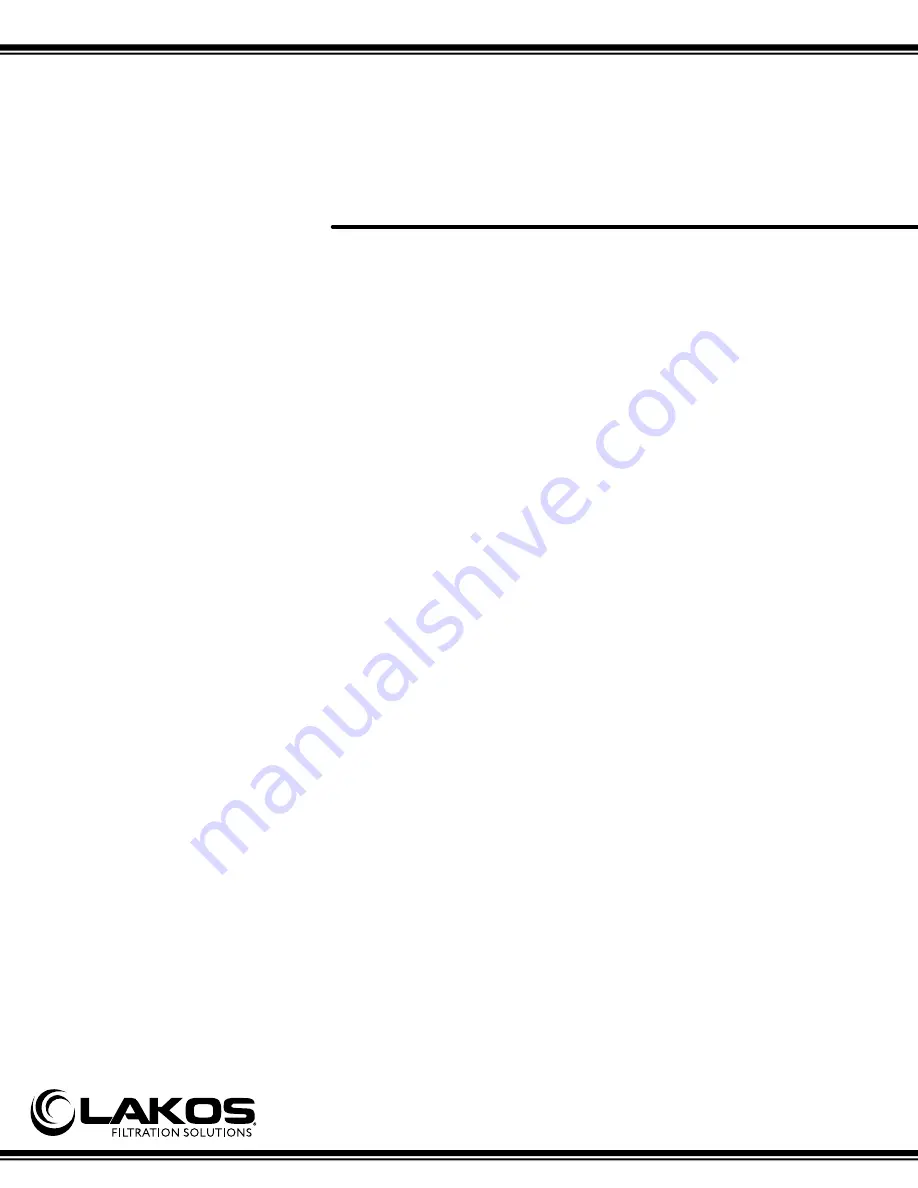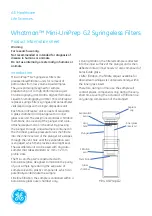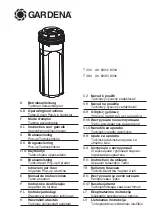
LAKOS Waterworks PWC Series Separators
8
c. Gauge blockage – Close petcock valve, remove gauge and check for debris clogging the
gauge port, which could affect an accurate gauge reading.
Trouble-shooting Guidelines for Separator
Installations
1. Verify Actual Flow Rate: Use pressure gauges to indicate differential pressure and/or flow
meter to verify flow rate. (Multiple pumps used to increase flow are installed in parallel (into
common manifold); multiple pumps to increase pressure are installed in series (one after
another)).
Flow meters should be installed prior to the separator. Flow meters installed after the
separator may indicate erroneous data.
2. Plumbing Two Separators: Do not plumb two separators from two independent pumps into
the same outlet header without installing balancing valves on the discharge of each
separator. The balancing valves must be set to achieve a pressure loss across each separator
that indicates a proper flow rate (according to that model's published flow chart) equal to the
flow rate anticipated through the pump that feeds each separator.
3. Verify Actual Inlet Pressure: Actual inlet pressure must be at least 15 psi (1.03 Bar). A
minimum backpressure of 5 psi (.34 Bar) must be created at the separator discharge. This
may be accomplished via process equipment, piping, or a valve. Unrestricted open discharge
to a pit, sump, etc., will result in unacceptable performance.
Be sure that no source of vacuum/suction exists in the piping arrangement. If
vacuum/suction exists (i.e. downward piping after the separator, pump suction installation,
booster pump etc.), put a valve between the separator and the suction source and pressure
gauges on either side of the valve. Throttle the flow until the pressure loss across the
separator indicates the published flow rate which most closely resembles the anticipated flow
rate through the separator.
4. Vibration: Mild vibration is possible in some installations and should be considered normal.
Excessive vibration is typically due to entrained air (use air vents), improper piping (follow the
installation instructions) or system vibration (amplified at the separator).
Units should be secured properly to the floor or wall. If separator is hung, stabilizers may
need to be added. The foundation must be sturdy enough to support the weight of the
product (see page 4 for separator weight with water).
The use of expansion joints is advisable with all separator installations. It is particularly
recommended that these devices be employed when piping arrangements cannot comply
with the configurations suggested by LAKOS product literature.




























